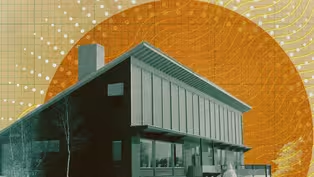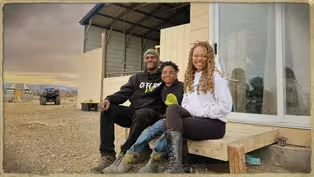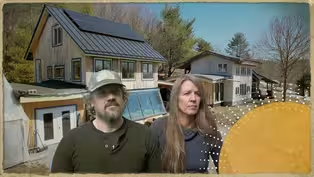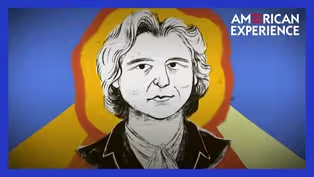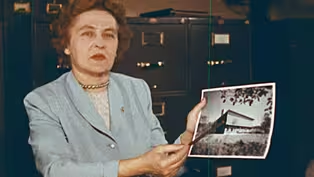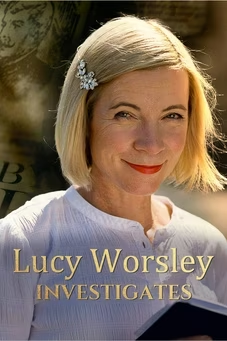
Chapter 1 | The Sun Queen
Clip: Season 35 Episode 5 | 11m 7sVideo has Closed Captions
Watch a preview of The Sun Queen.
Watch a preview of The Sun Queen.
Problems playing video? | Closed Captioning Feedback
Problems playing video? | Closed Captioning Feedback
Corporate sponsorship for American Experience is provided by Liberty Mutual Insurance and Carlisle Companies. Major funding by the Alfred P. Sloan Foundation.

Chapter 1 | The Sun Queen
Clip: Season 35 Episode 5 | 11m 7sVideo has Closed Captions
Watch a preview of The Sun Queen.
Problems playing video? | Closed Captioning Feedback
How to Watch American Experience
American Experience is available to stream on pbs.org and the free PBS App, available on iPhone, Apple TV, Android TV, Android smartphones, Amazon Fire TV, Amazon Fire Tablet, Roku, Samsung Smart TV, and Vizio.
Buy Now
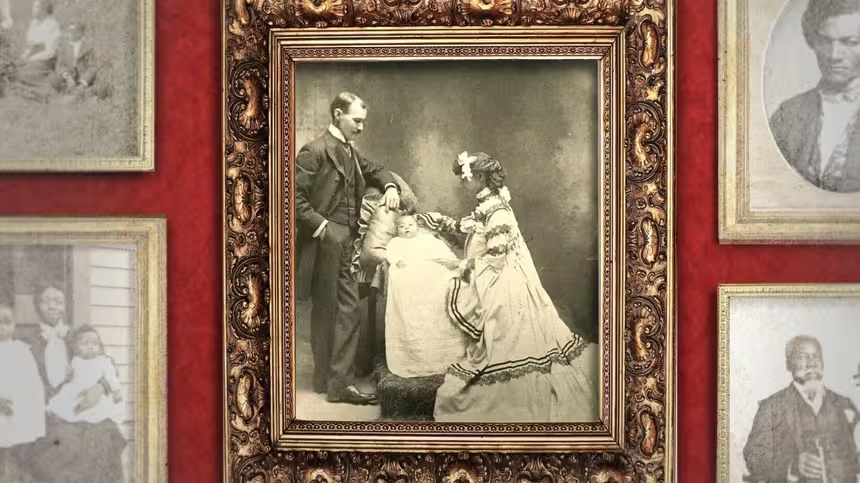
When is a photo an act of resistance?
For families that just decades earlier were torn apart by chattel slavery, being photographed together was proof of their resilience.Providing Support for PBS.org
Learn Moreabout PBS online sponsorship♪ ♪ NARRATOR: In September 1980, the Department of Energy was in the midst of building a revolutionary house.
A recent energy crisis and early warnings about global warming had helped to bring the project about.
Located in Carlisle, Massachusetts, the remarkable new structure was to have solar heat, solar hot water, solar-powered appliances, and, in theory, would even sell the excess energy it produced back into the grid.
To pull it off, the D.O.E.
made a most unusual call, to an 80-year-old retiree down in Florida.
Her name was Mária Telkes, and some 40 years earlier, the Hungarian physicist had put solar on the map-- so famously, in fact, that she went by the nickname the Sun Queen.
♪ ♪ MICHELLE ADDINGTON: She was ahead of her time, and she was asking the right questions.
We have this amazing thermal source with incredible power.
Why have we not harnessed it?
ANDREW NEMETHY: She saw something that I don't think anybody conceived of at that point.
She imagined that the world could get free power from the sun.
I mean, if one person's vision is here, her vision was way out there.
A.L.
HU: Telkes believed that there was a moral imperative to understanding solar energy, not just as an alternative, but as a way to kind of live our lives.
I would like to show you some very simple things like a house.
The sun's energy is absorbed and is transformed into heat.
DANIEL BARBER: What Telkes showed us was that this ambition to think differently about energy sources not only changes the way that we build, the way that we produce heat, the kind of technologies of those systems, but also shifts our expectations, right?
Shifts the way that we think about living in a house.
NARRATOR: Telkes came out of retirement to help make the Carlisle house a success.
When it came to all things solar, her passion bordered on obsession.
Her vision was as legendary as her engineering, but her ambition came at a cost.
NEMETHY: Mária was a solar evangelist.
Now, like a lot of evangelists, she was pushing her vision very strongly.
Anybody who disagreed with that vision kind of rubbed up against her the wrong way.
OLIVIA MEIKLE: This was not something that would've been easy as a woman, but she was determined to change the world in the face of what must have been enormous odds.
SARA SHREVE-PRICE: Telkes knew you can't just wait for society to be ready.
You need to sell them on this idea.
You need to convince them that this is the time for the idea.
If we want the sustainable future, we don't just need the technology.
We need to want the technology.
♪ ♪ ♪ ♪ ♪ ♪ (horn blasting) NARRATOR: Mária Telkes, 32, physicist, had just arrived from her native Hungary.
Her immigration papers gave her height and marital status, but said nothing about her most distinguishing trait of all.
Telkes was a scientist on a mission, and had traveled to the United States for one reason, and one reason alone.
By the early 1930s, America was in the throes of a solar revolution that had been going on for more than 50 years.
In 1884, the first experimental solar panels had gone up on a New York City rooftop.
Four years later, the American chemist Edward Weston developed the world's first solar cell, while, on an ostrich farm in Pasadena, one inventor installed a giant solar motor, some 35 feet across, that pumped enough water from the local well to make the dry California ground a verdant paradise.
In any single issue of "Scientific American," subscribers might read about a solar printing press that could reel off 500 copies an hour, or a host of solar gizmos that did everything from pumping sewage to distilling alcohol.
At the turn of the century, there were so many solar hot water heaters in homes in Florida that one resident remarked, "I can't remember a house on the block that didn't have one."
IVAN PENN: It was this age of all this talk about solar.
It's about 1905.
Albert Einstein is looking at what they called the photoelectric effect: the release of electrons when light hit metal, which is essential in using solar to make electricity.
By 1931, Edison is in a conversation with Henry Ford, and he says, "I'd put my money on the sun and solar energy," in how we ultimately are going to power the world.
SHREVE-PRICE: Telkes is passionately interested in trying to chase the power of the sun.
In the United States, in the 1930s, there are some really interesting projects.
But there haven't been giant successes, and I think she sees that as a real possibility.
NARRATOR: Telkes had been obsessed since she was a girl.
The brilliant daughter of wealthy Hungarian bankers, born December 12, 1900, in Budapest, she'd explain, "I was only 11 when "I became intensively curious about chemistry.
"I purchased test tubes and chemical glassware, and a small garden house became my laboratory."
From the beginning, she had bold plans to put her science to work.
ADAM ROME: Telkes, growing up in Hungary, coal was the dominant form of energy.
Coal is incredibly polluting.
You could have days, in the middle of the day, when it seemed like night, or that, like an eclipse, where you couldn't see the sun.
So there were people early in the 20th century who did imagine a coal-less future.
And Telkes, growing up in that time, begins envisioning alternative sources of energy.
NARRATOR: By the time she was 24, Telkes had earned a doctorate in physical chemistry from the University of Budapest.
"It is the things supposed to be impossible that interest me," Telkes would explain.
"I like to do things they say cannot be done."
♪ ♪ In May 1932, Telkes arrived in Cleveland, where by day, she had gotten a job as a researcher at a biomedical facility.
But by night, she was developing and refining a device called a thermopile to convert sunlight into electricity.
Her work caught the attention of the press, and in 1934, she was hailed as one of the most interesting women of the year, alongside a tennis champion, a Rockefeller, and child actress prodigy Shirley Temple.
As one reporter who met her at the time remarked, "Miss Telkes is a scientist-- everything else bores her."
NEMETHY: She was adventurous.
And she came over to the United States and basically fell in love with it.
She loved the country and she loved the freedom that she had to use her immense skills and her vision for whatever she came up with.
NARRATOR: Now, in April 1938, out in Boston, she heard about an exciting new project starting up at the Massachusetts Institute of Technology.
The Solar Energy Fund launched to bring together the very best minds on the solar question.
As university leaders told the press, "The store of energy in our familiar fuels, while great, is not inexhaustible."
So it was high time for bold new thinking.
Telkes immediately wrote to them, "I read with great interest "the announcement of the solar project.
May I have the opportunity of a personal interview?"
Her timing couldn't have been better.
Her new thermopile could, by her own estimation, turn sunlight into power some ten times more efficiently than any existing technology.
When she initially wasn't offered a position, she traveled to Boston with her prototype, determined to impress the all-male committee.
The gambit worked, and, in July 1939, she got the job.
But just as it was all falling into place, everything changed.
(bombs whistling) (explosion roars) As war broke out across Europe, Asia, and the United States, it unleashed an energy crisis the likes of which the world had never seen.
By June 1943, petroleum reserves on the East Coast dropped to an all-time low.
People needed a ration card just to fill up the tank.
Okay, it's an A card, three gallons.
NARRATOR: And were forbidden from driving faster than 35 miles an hour, known henceforth as "Victory Speed."
Making matters worse, Nazi U-boats were sinking so many oil tankers in the Gulf of Mexico that beaches were stained ink-black.
ROME: World War II accentuates the sense that a reckoning is coming.
It really was partly a war about resources.
(film music playing) FILM NARRATOR: Use trains.
Use bus lines.
Share cars going to work.
ROME: And so it's this incredible period of government promotion of conservation.
So people were hyper-conscious of their fuel use.
And for a while, this idea really mattered for a lot of Americans.
NARRATOR: Telkes's solar dream was more urgent than ever, but the M.I.T.
solar project was put on ice for the duration of the war.
The entire team was reassigned to help with the war effort, and Telkes threw herself into the work, alongside her collaborator, the head of the Solar Energy Project, a chemical engineer named Hoyt Hottel.
Clip: S35 Ep5 | 3m 39s | The first modern house to be heated by nothing but the sun was designed by Mária Telkes. (3m 39s)
Clip: S35 Ep5 | 6m 1s | Explore off-grid life in a one-bedroom cabin in the Northern Minnesota woods. (6m 1s)
Clip: S35 Ep5 | 6m 9s | Find out what modern off-grid living looks like at a 25-acre homestead in New Mexico. (6m 9s)
Clip: S35 Ep5 | 5m 32s | Find out how one family lives on a one-acre off grid market farm in Vermont. (5m 32s)
A Solar Pioneer’s Challenge to Women
Clip: S35 Ep5 | 2m 17s | Inventor Mária Telkes wanted women scientists to reach for the sun. (2m 17s)
Video has Closed Captions
Preview: S35 Ep5 | 1m 29s | Unsung scientist Mária Telkes dedicated her career to harnessing the power of the sun. (1m 29s)
Providing Support for PBS.org
Learn Moreabout PBS online sponsorshipSupport for PBS provided by:
Corporate sponsorship for American Experience is provided by Liberty Mutual Insurance and Carlisle Companies. Major funding by the Alfred P. Sloan Foundation.


